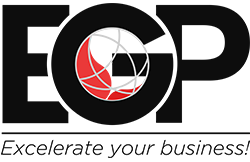Executives must constantly respond to various – and evolving – changes and thus need trusted, accurate and timely data to make the right decisions regarding any needed actions. Therefore, modern organizations must have a clear strategy for ongoing robust data quality management. Why? Well, better decisions create better outcomes. And high-quality data gives organizations the confidence in data to get decisions right to fuel better performance, more accurate results and reduced risk.
Why Is Data Quality Important?
Data quality matters, as shown by research. According to Ventana, almost nine in 10 organizations (89%) reported data-quality issues as an impactful or very impactful barrier. Those impacts cause a lack of trust in the data and wasted resource time in financial and operational processes.
As organizations turn to more modern technology to help drive better future directions, the emphasis on data quality management in enterprise systems has only increased. In a report on closing the data–value gap, Accenture said that, “without trust in data, organizations can’t build a strong data foundation.” Only one-third of firms, according to the report, trust their data enough to use it effectively to derive value.
In short, the importance of data quality is increasingly clearer. As organizations get more complex and data volumes grow ever larger, attention naturally shifts to the quality of the data being used. Not to mention, as more advanced capabilities are explored and adopted – such as AI and ML – organizations must first examine their data and then take steps to ensure effective data quality. Why are these steps necessary? Simply put, the best results from AI, ML and other advanced technologies are entirely dependent on good, clean quality data right from the start.
What’s Preventing Good Data Quality?
In many cases, legacy CPM and ERP systems were simply not built to work together, making data quality management difficult. Such systems also tended to remain separate as siloed applications, each with its own purpose. Often, little, or no connectivity exists between the systems, forcing users to manually retrieve data from one system, manually transform the data and then load it into another system.
This lack of robust data quality capabilities creates a multitude of problems. Here are just a few:
- Poor data input with limited validation, affecting trust and confidence in the numbers.
- High number of manual tasks, lowering overall data quality and adding latency to processes
- No data lineage, preventing drill-down and drill-back capabilities and adding time and manual effort in accessing actionable information for every number.
The solution may be as simple as demonstrating how much time can be saved by transitioning to newer tools and technology. Via such transitions, reducing the time investment can dramatically improve the quality of the data via effective integration with both validation and control built into the system itself.
What’s the Solution?
Some believe Pareto’s law – that 20% of data enables 80% of use cases – applies to data quality. Organizations must therefore take 3 steps before adopting any project to improve financial data quality:
- Define quality – Determine what quality means to the organization, agree on the definition and set metrics to achieve the level with which everyone will feel confident.
- Streamline collection of data – Ensure the number of disparate systems is minimized and the integrations use world-class technology with consistency in the data integration processes.
- Identify the importance of data – Know which data is the most critical for the organization and start there – with the 20% – moving on only when the organization is ready.
At its core, a fully integrated CPM software platform with built-in financial data quality (see Figure 1) is critical for organizations to drive effective transformation across Finance and Lines of Business. A key requirement is providing 100% visibility from reports to data sources – meaning all financial and operational data must be clearly visible and easily accessible. Key financial processes should be automated. Plus, using a single interface would mean the enterprise can utilize its core financial and operational data with full integration to all ERPs and other systems.

Figure 1: Built-In Financial Data Quality Management in OneStream
The solution should also include guided workflows to protect business users from complexity. How? By uniquely guiding them through all data management, verification, analysis, certification and locking processes.
Why OneStream for Data Quality Management?
OneStream’s unified platform offers market-leading data integration capabilities with seamless connections to multiple sources. Those capabilities provide unparalleled flexibility and visibility into the data loading and integration process.
OneStream’s data quality management is not a module or separate product, but rather a core part of OneStream’s unified platform. The platform provides strict controls to deliver confidence and reliability in the data quality by allowing organizations to do the following:
- Manage data quality risks using fully auditable integration maps and validations at every stage of the process, from integration to reporting.
- Automate data via direct connections to source databases or via any character-based file format.
- Filter audit reports based on materiality thresholds – ensuring one-time reviews at appropriate points in the process.
The OneStream Integration Framework and prebuilt connectors offer direct integration with any open GL/ERP or other source system (see Figure 1). That capability provides key benefits:
- Fast, efficient direct-to-source system integration processes.
- Ability to drill down, drill back and drill through to transactional details for full traceability of every number.
- Direct integration with drill back to over 250 ERP, HCM, CRM and other systems (e.g., Oracle, PeopleSoft, JDE, SAP, Infor, Microsoft AX/Dynamics and more).
Delivering 100% Customer Success
Here’s one example of an organization that has streamlined data integration and improved data quality:

“Before OneStream, we had to dig into project data in all the individual ERP systems,” said Joost van Kooten, Project Controller at Huisman. “OneStream helps make our data auditable and extendable. It enables us to understand our business and create standardized processes within a global system. We trust the data in OneStream, so there are no disagreements about accuracy. We can focus on the contract, not fixing the data.”
Like all OneStream customers, Huisman found that the confidence from having “one version of the truth” is entirely possible with OneStream.
Learn More
If your Finance organization is being hindered from unleashing its true value, maybe it’s time to evaluate your internal systems and processes and start identifying areas for improvement. To learn how, read our whitepaper Conquering Complexity in the Financial Close.
This article first appeared on OneStream Software blog page by Trevor Walker



